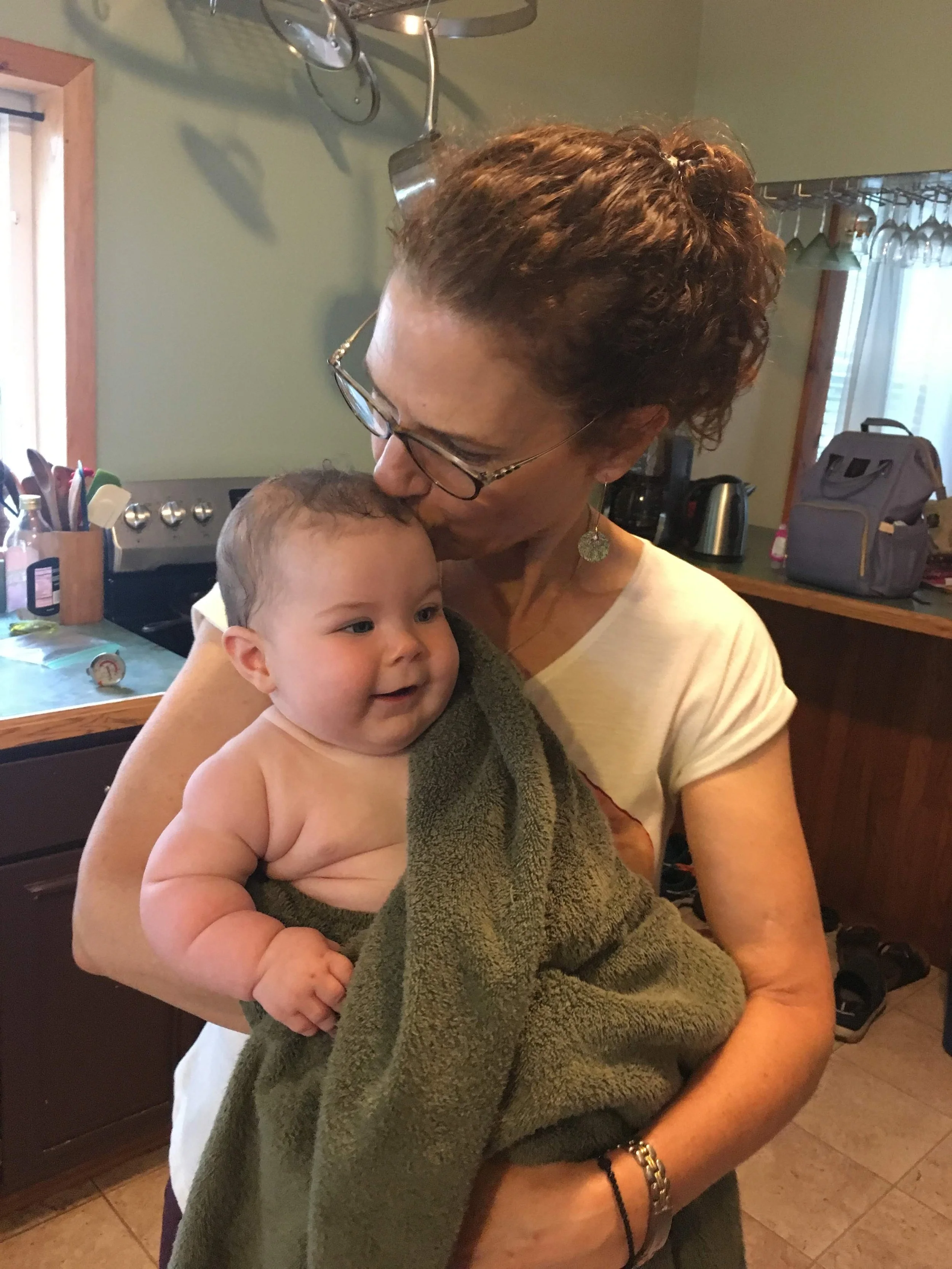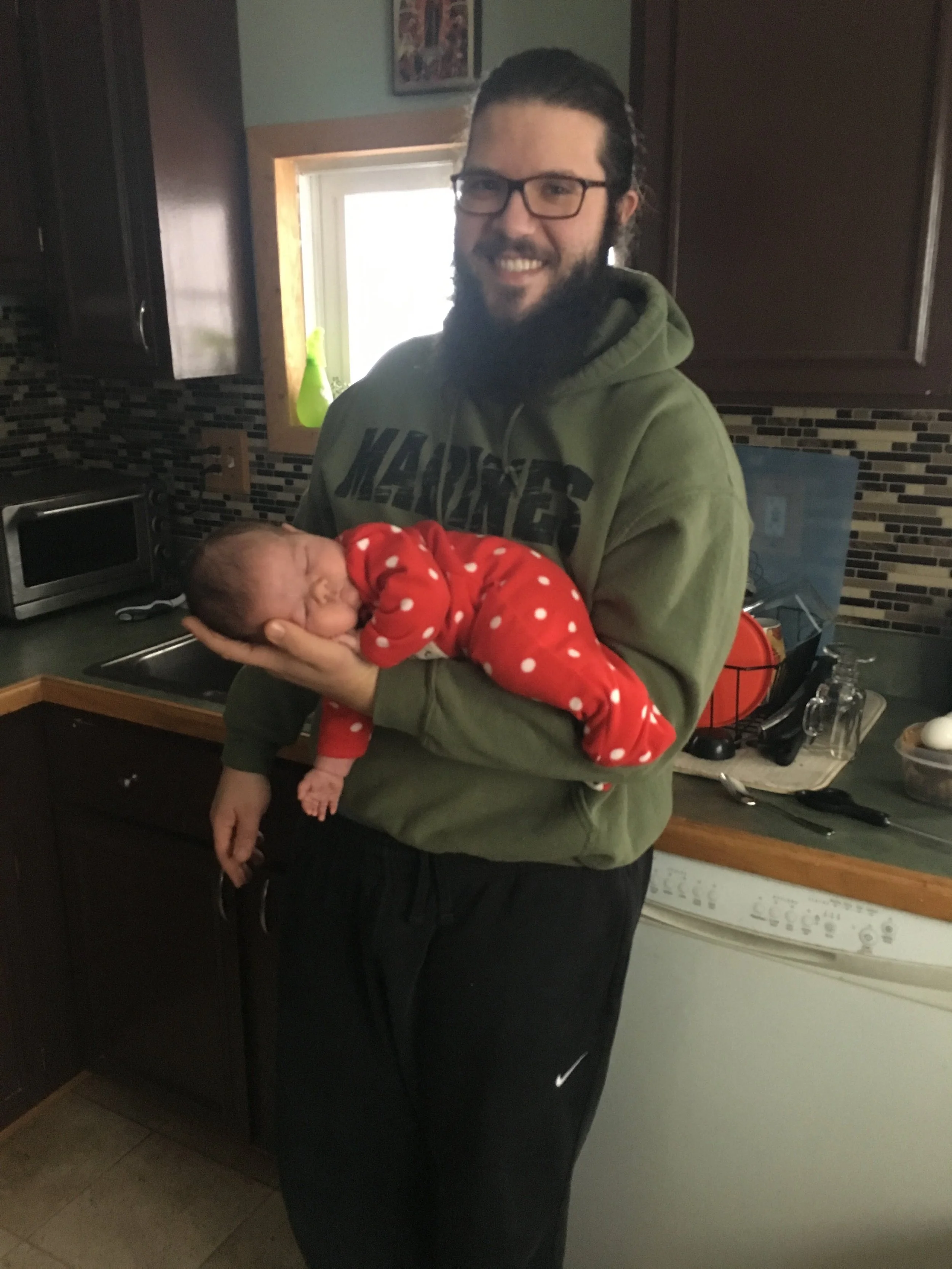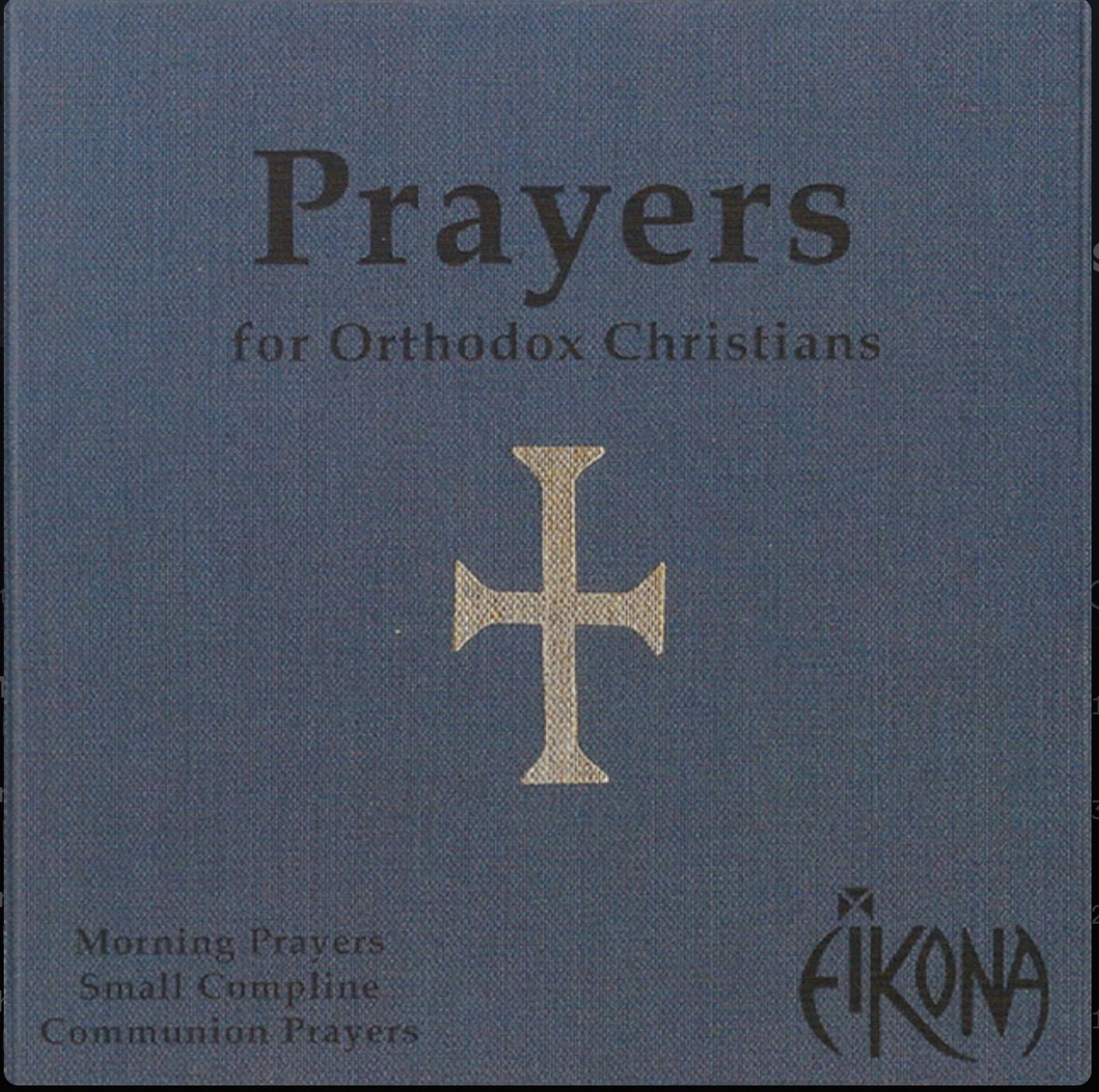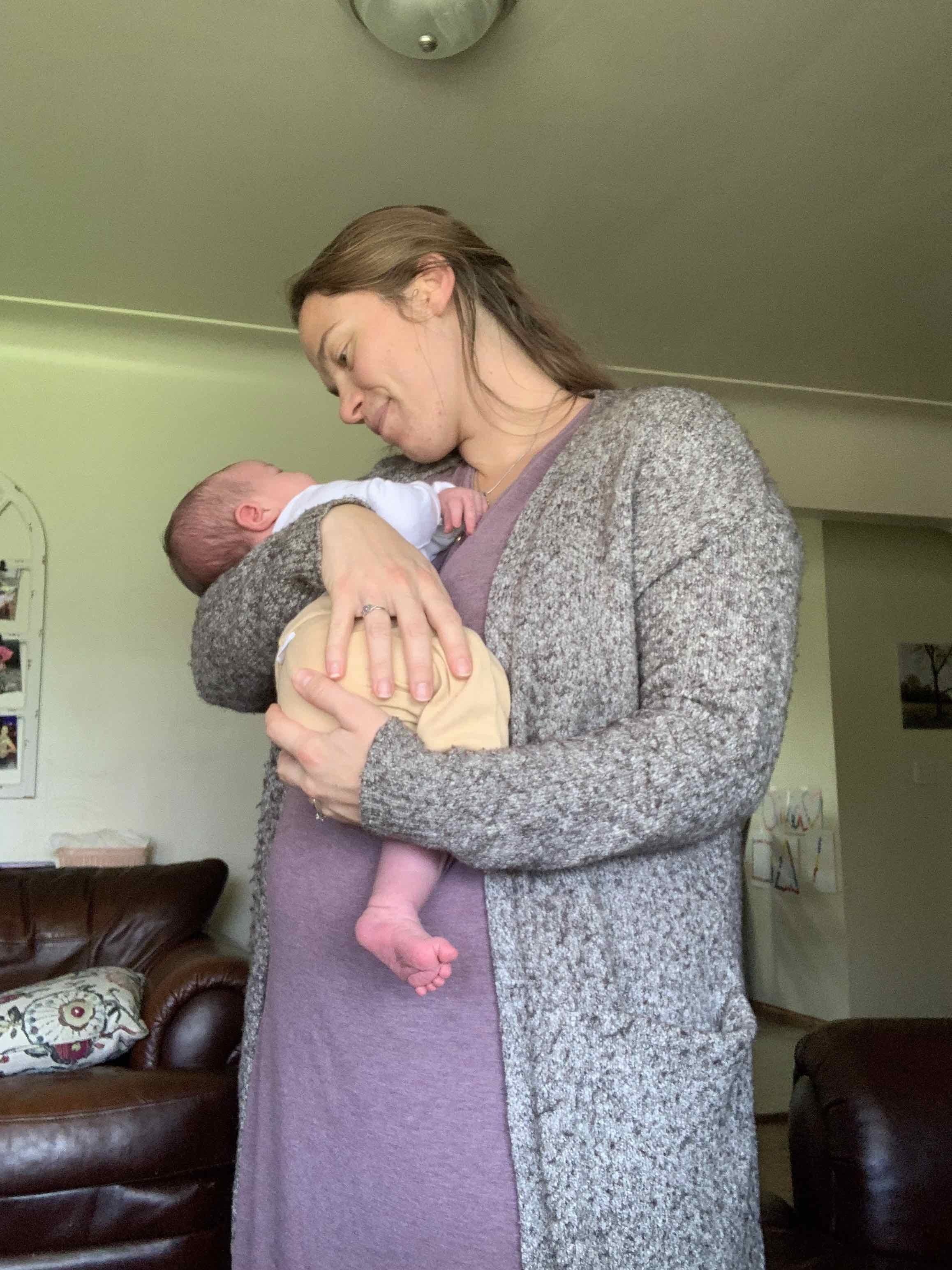Postpartum Planning Is Essential – 10 Items I Always Have on Hand
If you landed here, chances are, you’re busy preparing for your baby's birth. You probably had a baby shower or Mother's Blessing. You made a hospital bag or planned your cozy spot for your home birth, but have you started your postpartum planning yet?
Postpartum is a time of immense change. On the one hand, you feel like you’re on cloud 9 because of your new baby but on the other, you’re now in a body entirely foreign to you. There is no longer a baby inside you but you’re forever changed because of what has happened. The world says “bounce back” but the Church says “stay in and rest”.
With that in mind, I want to give you an idea of what happens in the postpartum period and how you can set yourself up for success. Whether that means resting for 40 days straight, having a freezer full of meals, or a list of people on hand to help, I want to help you enter this new season with your feet under you. Motherhood is hard enough, let’s start you off on a good and steady foot so that when the going gets tough you have a plan in place to help.
Physiological Changes During Postpartum
With pregnancy, you have 9+ months to adjust to the changes happening. You’re not suddenly pregnant and birthing all within a night or two. But, postpartum comes all at once. One minute you’re pregnant and the next you’re not. It’s both normal and wild.
So it’s understandable that your body may feel foreign all over again. And because it took 9 months to grow your baby it will take at least that much time to adjust to this new body. And for some mamas, it takes much longer.
Let’s look at an overview of the changes you’ll experience in your first 40 days postpartum. This isn’t an exhaustive list but after 4 full-term postpartums this is what stands out to me as most important.
Immediate Postpartum ~ First 24 Hours
Massive hormonal shifts — over 1000% drop in estrogen and progesterone levels.
Vaginal bleeding — lochia — will continue for up to 6 weeks.
Breast changes — Colostrum is present and is the perfect first food for your baby. Breast milk comes in between 3-5 days postpartum.
Baby goes between long naps and small wake windows. He may nurse non-stop or take longer breaks.
You’ll adjust to a time that is light on sleep but high on love.
Early Postpartum ~ 2-15 Days
Milk should be in — you’ll know because your breasts are more full, have apparent veins, and the baby will make audible gulping noises. Prolactin — the milk-making hormone — continues to rise and finds its peak between midnight and dawn. Cluster feeding is normal for the baby to help establish the milk supply.
Your bleeding is still heavy but will continue to lighten.
Baby continues with nursing, sleeping, and pooping.
You may experience “baby blues”, which may look like uncontrollable crying or laughing. This will resolve and should be met with a hug and normalizing the situation.
Late Postpartum ~ 15-40 days
Breastfeeding is likely becoming easier, initial nipple soreness should be subsiding — if you’re still experiencing pain with nursing, consider reaching out to a lactation consultant who can help you adjust your baby’s latch.
Bleeding is pretty light now, like a light period, but still requires a pad and rest.
You may be feeling ready for more activity, try to continue to rest as much as you can while introducing gentle walks and stretching.
Baby will start to differentiate days from nights and start to realize that we only nurse and go back to sleep at night. Encourage your baby with bright daylight during the day and a darkened room through the night
It may seem that some days “all you do” is feed, hold, and change a baby in your 40 days postpartum. But that’s all you “need” to be doing these days. Little by little you’ll find a routine that works for your family only for it to be turned on its head by life. But that’s just it! Life continues and we get to decipher it with a precious new life.
After 40 Days
From here, you’ll slowly find a rhythm. Some days will feel easy, like you know what you’re doing while others will still feel just as hard as the first day. Take deep breaths and give yourself SO. MUCH. GRACE. This is a new landscape and one that requires patience and lots of leaning on others.
My sweet mama holding darling Olivia during my first postpartum.
Set Up Help for Postpartum
Setting up help is probably the most important part of preparing for postpartum. Birth, breastfeeding, and healing are all a given. Unless you choose to bottle-feed your baby, which is your choice! But my point is that your body will recover. How quickly, though, is usually dependent on the help you have.
First, you need to set your own expectations for what postpartum will look like. Above you read a small insight into what postpartum can look like. Postpartum is not an easy walk in the park. Your body just went through tremendous work to bring you baby earthside. Whether you had a cesarean section or vaginal birth, there is trauma your body needs to recover from.
The good thing though is that unlike major medical procedures which aren’t physiologically designed, your body wants to heal and knows how to heal! So while you need to acknowledge the impact birth has on your body, you should be assured that when you rest, nourish your body, and bond with your baby, your body will take care of the rest. That just requires you to set up help now.
Your Spouse
If this is your and your husband's first baby, chances are high that he will be just as unsure or more unsure than you when it comes to parenting. But unlike you, who had time to adjust to a baby through pregnancy, your husband is thrown into parenting the moment he holds your sweet baby.
Give him lots of grace, tons of encouragement, and gentle patience as he navigates this transition too. And when it comes to help, allow him to help you! He can’t nurse the baby or heal your body but he can get you food, water, or be an ear for discussing insecurities. Don’t forget that he was there before the baby and you want him there long after. So depend on him, let him care for you as Christ cares for the Church (Ephesians 5).
My sweet husband working his "shushing magic" on our Olivia.
Community
If you have family in the area and you have a relationship that is healthy, include them in your postpartum recovery! I understand that not all family relationships are healthy but if you have them as someone to call on, you’ll be so thankful.
Discuss your needs and desires before birth! Maybe that looks like them coming a few days after the baby is born, doing a load of laundry and cooking a meal. Or maybe it's snuggling the baby while you and your husband take a nap together. Only you can establish healthy boundaries with your family and this should be done before the baby is born.
But, if you’re like me and you don’t live close to family you may need to rely on your church community to help you through postpartum. I was very hesitant to do this my first postpartum but I regret it. You can still accept help from people close to you without allowing them to overstep boundaries. Clearly communicate your expectations and needs and allow people to care for you.
Meal and/or Chore Train
A meal train is a wonderful opportunity for your community to serve you. I have been a part of many meal trains and have had many. There are dozens of different sites you can use to set up a meal train or simply put up a list at coffee hour. Take Them A Meal or Meal Train are both easy to set up and easy to navigate.
At my church, we have a point person for setting up meal trains. If you don’t currently have a meal train ministry, talk to your parish priest about creating one. But it doesn’t have to be with your church! It can be any group of people who want to help out.
And who doesn’t love a chore train? One person comes for laundry, one person comes to vacuum, another to wipe down the bathrooms. Because let’s face it, some people are better cleaners than cooks and we all want to serve where we serve best.
Meal Prep
Prepping nourishing and easy to eat meals before the baby comes has saved my life with all four of my postpartum seasons. I love that I can tell my husband exactly what we have on hand that sounds good to me. And I know he appreciates not having to figure out what to feed me when I can’t get to the kitchen.
Some of my favorite things to prep are:
Chicken and rice soup
Homemade lara bars
Pre-portioned oatmeal congee
Homemade english muffin breakfast sandwiches
Sweet potato chili
Sourdough toast with bone broth
10 Items to Have on Hand When Planning for Postpartum
Now that you’ve set up people to help, let's discuss a few items that I think are super helpful during postpartum. These things aren’t absolute necessities but I do believe that they help. (I get no commission for these links, they are just my preference.)
Audio Prayers
In my article, An Orthodox Christian Woman’s Guide to Honoring the 40 Days Postpartum, I discuss how and why you should still keep prayer present during your 40 days postpartum. And this, of course, continues throughout the rest of your life.
But I personally wouldn't know how to get my prayers in if it weren’t for audio prayers. Yes, I have some prayers memorized but the brain fog of postpartum can be overwhelming so I choose audio prayers to keep my heart and soul on track.
Check out Ekonia, Ancient Faith, or Patristic Nectar for great prayer options.
2. Pads
This should be a given but it needs to be said again, you will be bleeding for 5-6 weeks! The blood will taper from heavy to spotting over the weeks so make sure you have a few different options on hand.
I use disposable adult diapers like these, for the first three days, then I use something like these for one to two weeks, then a regular flow pad for the remainder. My bleeding usually slows down for a day or two and tricks me into thinking I can wear a liner but inevitably, I end up using a regular absorbent pad for around 2 weeks. This brings me to bleeding for 4-5 weeks.
3. Peri Bottle
If you give birth in the hospital you’ll likely get a peri bottle to take home but those aren’t great for reaching your vulva and anus. I recently got this one for my 4th birth and oh my gosh it worked SO MUCH BETTER than the standard plastic ones.
4. Reusable Water Bottle
You’re going to want to have water bottles in every room of your home! Even if you aren’t breastfeeding, there is so much fluid shifting after birth you need to be hydrating like it’s your job. If you’re breastfeeding, you’ll probably want your own 10-gallon cooler because of how thirsty you’ll be. I kid, but truly, you need a good reusable water bottle at all times.
5. Snacks
Breastfeeding hunger is pregnancy hunger x 10. Fill your house with nourishing and easy to eat snacks that sound good at all hours of the day and night. I personally love Heavenly Hunks, trail mix, or protein bars for middle-of-the-night snack attacks. They’re easy to eat and pack a punch of protein and fat.
During the day you might consider yogurt, hard-boiled eggs, pre-made egg and sausage sandwiches, or protein smoothies. But those require someone to help you get them! So have a variety of nutrient-dense snacks that you and your spouse can easily grab.
6. Nipple Cream
This is a bit of a controversy because some will argue you don’t need nipple cream if you have a good latch, but what if you don’t and you need support? I’d rather have an option than scramble when I’m in pain.
Nipple cream doesn’t have to be complicated! Coconut oil is great, beef tallow is super healing, and even lanolin can come in handy. With my first daughter I wouldn’t have survived those first few weeks without a nipple cream while my nipples adjusted to the new sensation. But I quickly didn’t need it.
Handmade beef tallow butter, sold in my Etsy shop.
7. Breast Pads
When my milk comes in it takes a few weeks to figure out just how much milk my baby needs. During this time I like disposable breast pads like Lansinoh Breast Pads but once my milk regulates I switch to reusable breast pads.
Some women never leak while others (me!) leak everytime there is a let-down for the first year. Having breast pads on hand will make your life much easier!
8. Tea
In some cultures and traditions, it’s of utmost importance to only drink and eat warm food in the early postpartum. This brings circulation and healing to all of the parts that need it. One way to encourage this is with tea! Tea is also a powerhouse of vitamins and minerals needed to heal and breastfeed.
Some of my favorite teas postpartum are:
Stinging Nettle Tea
Red raspberry leaf tea
Chamomile Tea
Dandelion Tea
Just to name a few! I strongly believe that stinging nettle tea, which I drank during my 4th postpartum, aided in a much easier hormonal shift than my previous postpartum.
9. Perineal Care
If you give birth in the hospital, they will probably give you a dermoplast spray and foam but those really aren’t great options… they’re filled with synthetic chemicals and we should think twice before putting them on our most tender parts. But take heart, there are so many good options available that are more natural and conducive to healing.
Earth Mama has a whole line dedicated to perineal care postpartum and I give it a 10/10 recommendation. Consider having a few of their items on hand to make your recovery just a bit more comfortable. I have used their sitz bath, perineal spray, and hemorrhoid ointment. All really eased my perineal discomfort.
10. Comfy Clothes
Ok, this totally isn’t essential but it’s nice! Having clothes that fit your new body can bring comfort and ease. I chose to sew a few moo-moo type dresses that had buttons to make breastfeeding easy.But a simple set with a button down shirt or nursing tank work just as well. Just having clothes you know will be comfortable will make your recovery that much easier.
This is one of the comfy moo-moo type dresses I made for postpartum.
Postpartum Planning Doesn’t Have to be Complicated
By now you know how passionate I am about planning for postpartum. It’s such a tumultuous time and I firmly believe that having a plan in place will make the transition much smoother. Take these ideas and discuss them with your spouse, family, and friends so your expectations are known. Then once you have help in place, meals prepped, and your home stocked, you’ll find yourself in a great place to recover and snuggle your sweet babe.
What did I leave out? Is there an item you find most useful during postpartum? Leave a comment so we can make an even better list! And don’t forget to share this article with your friends and family.





